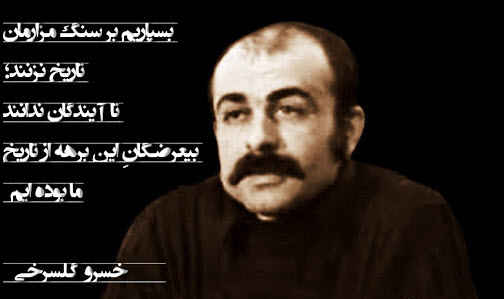Ayatollah Khamenei was one of the fighters against the Pahlavi regime before the revolution. He was arrested and imprisoned many times and exiled to Iranshahr for three years. After the revolution, he became a member of parliament and deputy minister of defense, and after the death of Ruhollah Khomeini, the leader of the Islamic revolution, he was succeeded by a vote of the assembly of experts.
In the meeting where he was elected as the leader, he said, “We must cry for a nation that has someone like me as their leader” and at the beginning of the revolution, he said he believed in the right to freedom of speech for all people. In this video, we listen to a part of his talk about the freedom of speech and expression.
Who is Ayatollah Khamenei
Khamenei was born in Mashhad, Iran, in 1939. He studied Islamic sciences at the seminaries of Mashhad, Qom, and Najaf. He became involved in the opposition to the monarchy of Mohammad Reza Pahlavi in the 1960s and joined the Islamic Republican Party led by Ruhollah Khomeini. Ayatollah Khamenei was arrested several times by the Pahlavi regime and spent three years in exile in Iraq and Turkey.
After the Islamic Revolution of 1979, Khamenei became a close ally of Khomeini and held various positions in the new government. Iranians elect him as a member of the Assembly of Experts, the Islamic Consultative Assembly, and the Expediency Discernment Council. He also served as Tehran’s Friday Prayer Imam and the head of the Islamic Revolutionary Guard Corps.
In 1981, Ayatollah Khamenei was elected as the third president of Iran, succeeding Mohammad-Ali Rajai who was assassinated by a bomb. He survived an assassination attempt in 1981, which left him partially paralyzed. As president, he oversaw the Iran-Iraq War, which lasted from 1980 to 1988 and claimed hundreds of thousands of lives on both sides. He also supported the expansion of Iran’s nuclear program and its involvement in regional conflicts such as the Lebanese Civil War and the Afghan War.
In 1989, following the death of Khomeini, Khamenei was appointed as the supreme leader of Iran by the Assembly of Experts. He became the highest political and religious authority in the country, with powers over the executive, legislative, and judicial branches of government, as well as the armed forces and media. He also appointed six members of the Guardian Council, which has the authority to vet candidates for elections and approve or reject laws passed by parliament.
Why Khamenei in Persian Campus
You may have heard about Iran in the news. You may also have heard about the supreme leader of Iran. Here he is. Listen to his voice and what he believed when he was younger. Don’t forget your main goal is to learn Persian language. So, watch and listen to different Persian sources to practice listening and speaking. These videos can help you to access the Persian voices of Iranians of different ages and genders. Besides, he is one of the most influential characters in the lives of Iranians, the people who speak Persian, the language that you are learning.
Listen to Khamenei speaking in Persian language. Follow the lines in Persian, and practice saying the sentences simultaneously with him. Learn Persian language and beyond.
Also Listen and Watch
Ayatollah Taleghani: Hijab is not Mandatory
Ayatollah Montazeri: The great crime
Iran from a historical perspective
To visit Iranian people and learn about their culture and nature follow THIS LINK.
To learn Persian grammar, here you can find lessons on Persian Grammar.
Are you interested in learning Persian with music, HERE is where you can find many slow Persian songs with their lyrics.
Practice Dubbing the characters in Persian series HERE.
Listen to famous speeches from Iranian political figures, and learn about their mindset and a little bit of history through their talk HERE.
Listen to Persian podcasts in simple Persian HERE

